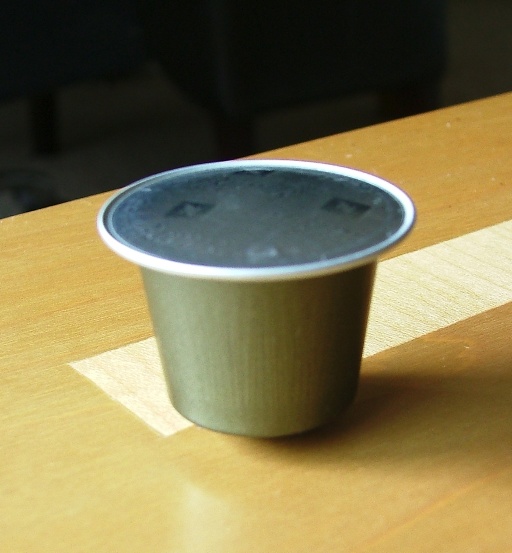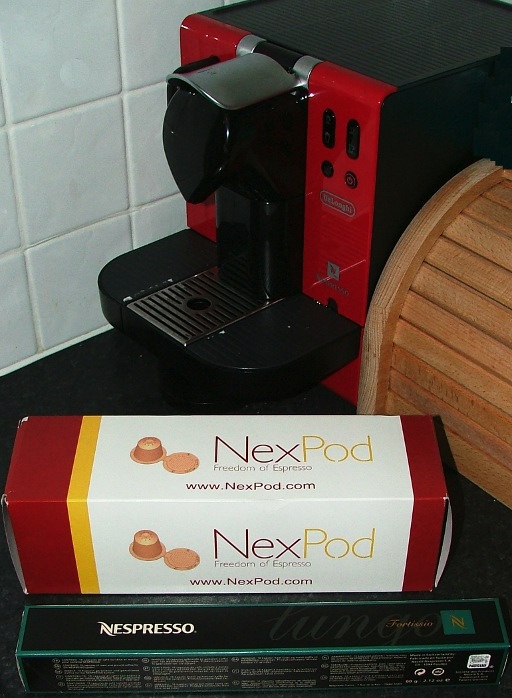So I turned 33 the other day and for a birthday gift, my parents bought me one of these:

A DeLonghi Lattissima 660 Nespresso coffee machine.
For those who are not coffee purists, these are usually catalogued under “Evil” or “Wrong” 😀
….but when you’re bleary-eyed in the morning….kindof convienent….
In fact, they’re pretty much designed for use by the bleary-eyed early in the morning. Take a coffee pod, lift the machine’s lever, drop in the pod, close the lever, push the button, get coffee. Want Cappachino or Latte? Stick on the foamer attachement, filled with milk, and press a different button. All automatic. And while it’s not as good as the hand-made stuff in a decent coffee shop, it’s not horrible, and it’s better than you’d get in a bad coffee shop. And early in the morning, you don’t care so much 🙂
However, there’s a major, major drawback. Specifically, it’s a Nestle product. Now their (rather heinous) ethical record aside, they’re fairly much dead set against the idea that they’d sell you the machine and then you’d buy the coffee elsewhere; so if you want pods for this thing, you can only buy them via Nespresso. This isn’t a major hassle if you find you adore the taste of one of the nespresso coffee blends, but to be honest, I don’t particularly find any of them incredibly good (“pretty okay” seems to be as far as the tastemeter goes with them) — and more, I don’t like the idea that if they decide the pods aren’t profitable anymore, I get stuck with a machine I can’t use.

Nespresso Pod - available only from Nespresso
So I was rather happy when I noticed a post in the Boards.ie coffee forum describing the NexPod, which is a third party pod for the Nespresso machines:
for those who like their own blends and a fresh grind, but who also like the convenience of a nespresso machine, these are now available: http://www.nexpod.com/
Excellent, I thought, and looked them up. €20 for 80 pods and filters, including delivery. Excellent, I thought again, and ordered some immediately. One of the purists didn’t think I’d be saving a lot of money (the pods work out cheaper than the nestle pods, but that’s before you count the cost of the coffee), however as I said at the time:
Dude, if it was about saving money, I’d drink tap water.
I wouldn’t have gotten the machine myself, but my folks though it was a good birthday present and in the morning when I’m bleary-eyed, it is. I’ll just put better coffee in the pods is all.Besides, I dislike shopping in Brown Thomas. I keep wanting to grab someone, slap them about the face and yell “YOU DO NOT PAY A THOUSAND EUROS FOR A COAT THAT LOOKS LIKE IT WAS MADE BY A BLIND TAILOR’S APPRENTICE YOU IDIOT!”. I’m getting worried that one day my self-control will slip and next thing you know, I’ll make the evening news…
A few days go by, and then yesterday, the Nexpods arrived. Three or four days, over a weekend. Not too bad, so that’s a point for logistical availability right there.

Nespresso machine, Nexpods and Nespresso pods
Right, time to test! Continue reading →



